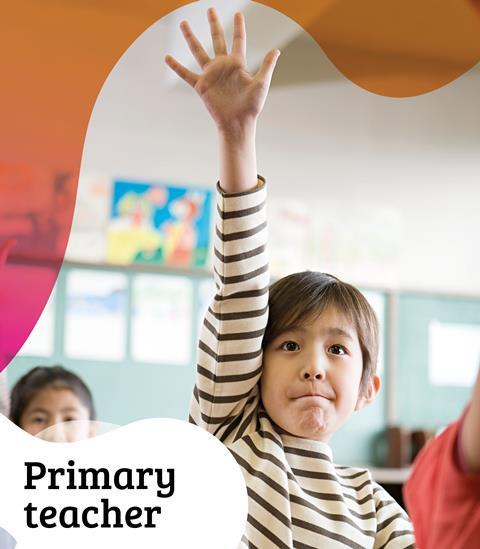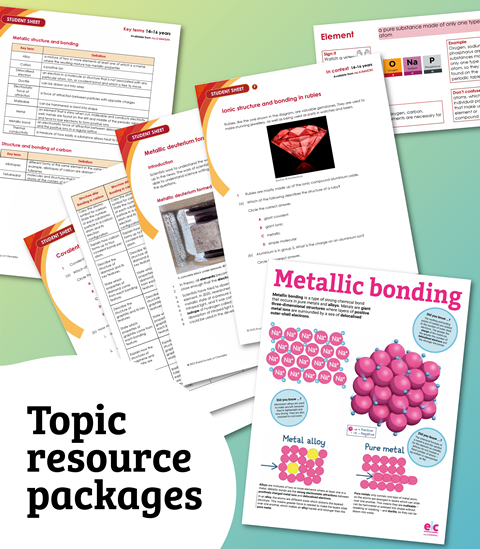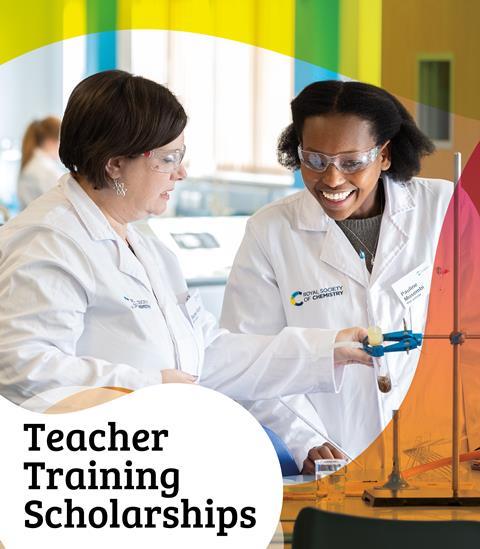All Properties of matter articles – Page 10
-
 Resource
ResourceThe water cycle: That’s Chemistry!
The ‘water cycle’ chapter from That’s Chemistry! This chapter looks at key ideas and activities that can be used to help students learn how different liquids evaporate at different rates, and the factors that affect these rates.
-
 Resource
ResourceThe Mpemba effect
Help discover why warm water freezes quicker than cold water. The Royal Society of Chemistry offered £1000 for the best and most creative explanation of this phenomenon, known as the Mpemba effect. View the winning entry, try the experiment for yourself, or read the original paper.
-
 Resource
ResourceThe properties of materials and their everyday uses: That’s Chemistry!
The ‘properties of materials’ chapter from That’s Chemistry! This chapter looks at key ideas and activities that can be used to help students learn how the properties of materials affects their suitability for different uses.
-
 Resource
ResourceSolids, Liquids and Gases
Cartoon animations that explain in simple terms why different materials have different properties and how they change on heating and cooling. Other animations cover separating solids from liquids and show what happens to a solid when it dissolves in a liquid. Courtesy of the ABPI.
-
 Resource
ResourceSolids, liquids and gases: That’s Chemistry!
The ‘solids, liquids and gases’ chapter from That’s Chemistry! This chapter looks at key ideas and activities that can be used to help students learn about solids, liquids and gases, and understand that some materials change state when they are heated or cooled.
-
 Resource
ResourceSeparating mixtures: That’s Chemistry!
The ‘separating mixtures’ chapter from That’s Chemistry! This chapter looks at key ideas and activities that can be used to help students learn how sieving can separate particles of different sizes and other methods used for separating mixtures.
-
 Resource
ResourceRocks and soils: That’s Chemistry!
The ‘rocks and soils’ chapter from That’s Chemistry! This chapter looks at key ideas and activities that can be used to help students learn that different types of rocks and soils have different properties.
-
 Resource
ResourceThermochromic materials
A hidden use of chemistry in everyday life includes thermochromic materials that change colour when exposed to heat or cold
-
 Resource
ResourceMagic sand
Putting the magic in magic sand this resource explores hydrophobic substances and how they work
-
 Class experiment
Class experimentCrystal chemistry
A fun experiment to grow your own crystals using everyday items in your learning space, great to get learners interacting with science
-
 Resource
ResourceInsulation and conduction: That’s Chemistry!
The ‘Insulation and conduction’ chapter from That’s Chemistry!: This chapter looks at key ideas and activities that can be used to help students learn how materials have different properties, including whether they are conductors or insulators of heat and/or electricity.
-
 Resource
ResourceMixing and dissolving materials: That’s Chemistry!
The ‘mixing and dissolving materials’ chapter from That’s Chemistry! This chapter looks at key ideas and activities that can be used to help students learn that mixtures are made up of more than one substance and that some mixtures can be separated.
-
 Resource
ResourceHeating and cooling materials: That’s Chemistry!
The ‘heating and cooling materials’ chapter from That’s Chemistry! This chapter looks at key ideas and activities that can be used to help students learn how the properties of some materials change when they are heated, and that some of these changes are irreversible.
-
 Class experiment
Class experimentChemistry in your shopping basket
Demonstrate the diversity of chemistry in our day-to-day lives with this collection of experiments. Includes kit list and safety instructions for five practicals
-
 Class experiment
Class experimentScience festivals
This set of handouts can be used to inspire people of all ages to take up chemistry in their own home! Racing raisins, cornflour gloop, erupting volcanoes, reaction times and iron from breakfast cereal are all covered here
-
 Resource
ResourceHand warmers
Use these student activities and teacher guide to investigate reusable and disposable hand warmers. You will compare reusable variants made with sodium acetate vs disposable handwarmers. You can also try making your own hand warmers. These activities may work well as a project on class topics like ‘winter’ or ‘body ...
-
 Feature
FeatureChemistry stinks
Jacob Cox, Simon Rees and Peter Banks describe educational techniques linking the sense of smell with memory
-
 News
NewsGold nanoclusters offer route to better vaccines
New technique improves immune response and safety of hepatitis E vaccine
-
 Resource
ResourceThe 2011 International Year of Chemistry Experiment
Worksheets and data from the 2011 mass participation experiment. Measure the acidity (pH) and salinity of your local water.
-
 Resource
ResourceFind the pattern - alcohols
Consider data on the densities of six primary alcohols and solve four problems based on those data.











